Rethinking Plastic
As a whole, design has always had at least one eye on the future, and at a time when there is much to be concerned about with regard to our collective future (and present), now is a time for the industry to come together; to share research, ideas and create action that can help foster a far more sustainable approach to how we design and make our products and built environments. To do so requires autonomous organisations that can push things forward and help apply pressure (where needed) on governments that can ultimately legislate positive changes in practice. That’s exactly what the World Design Embassies, a branch of Dutch Design Foundation, are doing. As they explain:
“World Design Embassies deploys the power of design in the development of new perspectives and concrete directions to societal challenges. In open coalitions, we work with partners and designers on the future.”
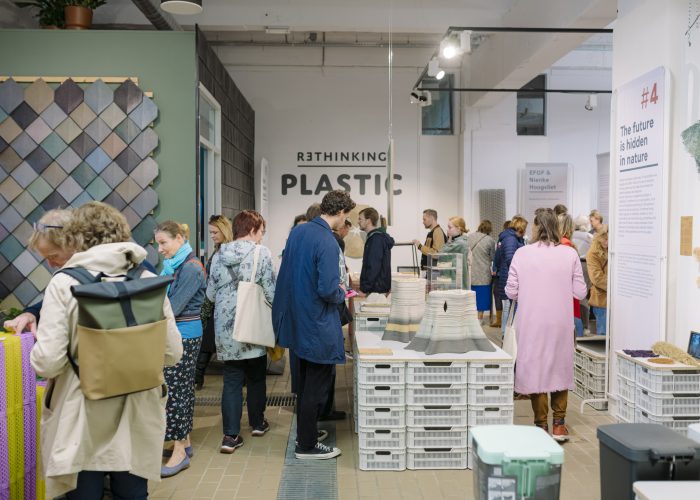
Rethinking Plastic exhibition
The topics they focus on include Inclusive Society, Health, Water and Food, to name a few. As ever, during this year’s Dutch Design Week in October, every Embassy laid out an evocative exhibition to highlight each team’s current research and output, sharing ideas that can help to change the way people live for the better. One standout showcase was that of the Embassy of Rethinking Plastic, which as the name suggests, points a laser-sharp focus upon the ubiquitous and much-maligned material, plastic.
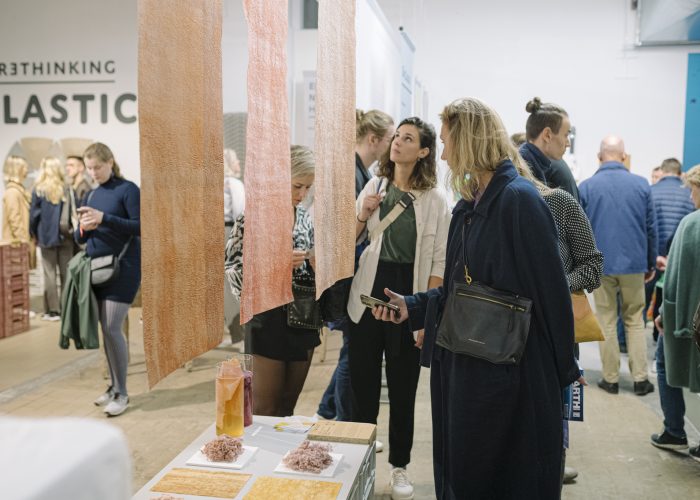
As has been the case over the past 3 years, the exhibition, which brought together a host of future-thinking designers and brands, poses the simple question of how we can look at and use plastic differently. In that time there has been a clear shift towards more thorough and innovative recycling of plastic, but this year’s event also highlighted another approach to creating plastic in the form of bio-based materials. These new materials share the same invaluable properties as the petroleum-based substances we now have a catastrophic abundance of – only without the same damaging side effects. Curator Leonne Cuppen underlines this point beautifully, “The main thing now is to show how things can really be done differently. Not only without plastic but also working in harmony with nature. As humans, we are not at the top of the pyramid; we are part of the whole natural system.”
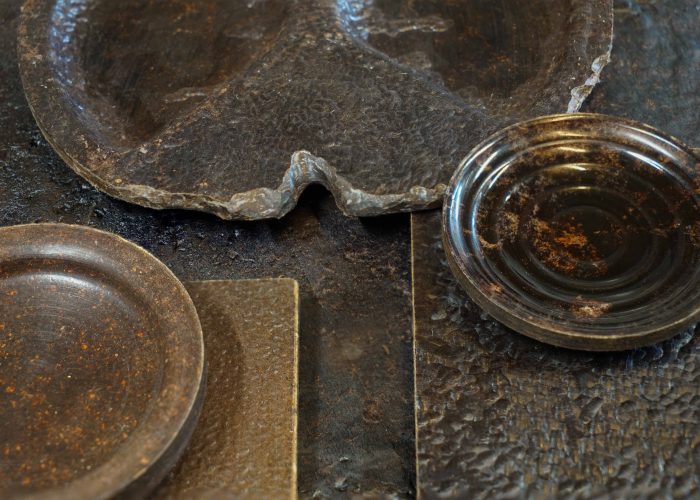
Dutch designer Basse Stittgen, who has previously explored the use of blood and eggs as raw material with which to create new forms, has focused more recent experimentation on organic polymers. Two of the most abundant are cellulose and lignin, both of which come from trees, although as Stittgen is quick to point out, we don’t always recognise how much contact we have with them, “Who thinks of cellulose fibres or a tree when holding a sheet of paper? And who actually knows lignin is the substance that holds the cellulose fibres together in that tree?” In the ongoing project Tree of Culture, Stittgen proposes a reexamination of the naturally produced polymer lignin with a series of material and product outcomes that share a similarly brown and natural-looking pigmentation as the forerunner of synthetic polymers, Bakelite.
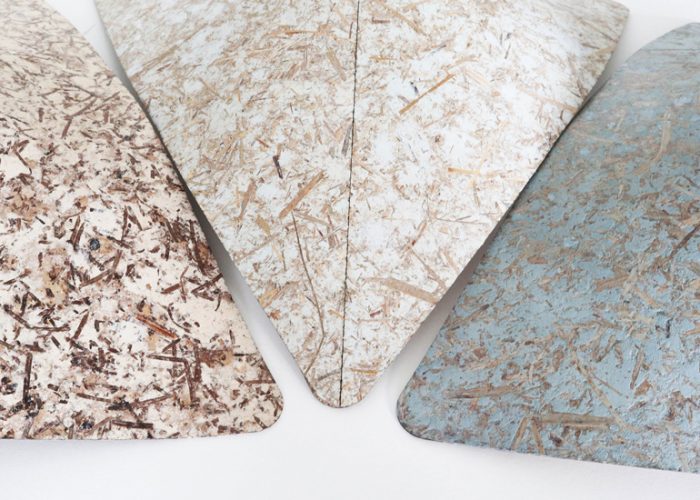
Van Hier
The surplus lignin leftover from the extraction of cellulose for paper and textile production is generally burned as biomass fuel. Much like Tree of Culture, another bio-based studio diverts naturally grown waste from incineration to create useful materials. VanHier has developed BioM from the surplus of agricultural and horticultural processes, gathering natural fibres to add to the mix including cattail, reed clippings, freesia, and even Christmas trees. In the case of BioM, cellulose is also a key ingredient and is sourced from fast-growing and abundant elephant grass, a crop that can be harvested every year and stores for times more CO2 per hectare than the equivalent area of forest. Combing these natural fibres with a natural adhesive creates a thin, formable, and scratch-resistant surface material similar to standard laminate. Where BioM differs aesthetically, is that the natural fibres can be seen on the surface of the material and what’s more, it is also recyclable, compostable, and helps to extract moisture from the air.
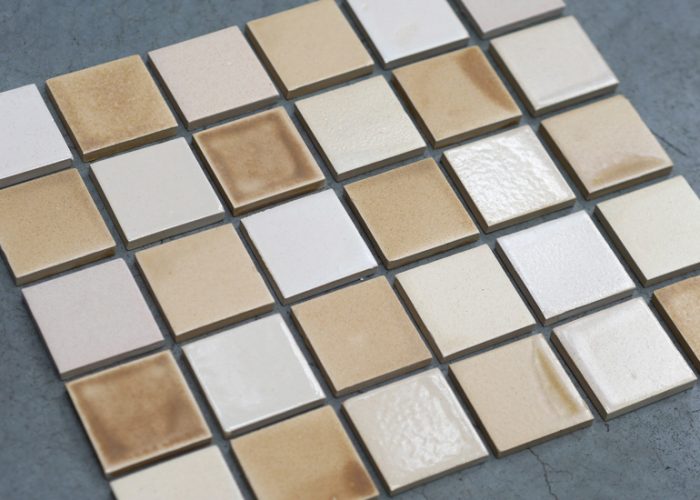
agne kucerenkaite
The recycling of waste materials is a primary feature of many of the material developments on show during the Rethinking Plastic exhibition, which is certainly the case with Biofuel Waste is Bliss. It’s also another that engages with waste materials ordinarily associated with incineration, and an extension of the Ignorance is Bliss project by designer Agne Kucerenkaite, who we interviewed earlier in the year. Joining forces with scientist Marija Spokaite, the project seeks to transform the many tonnes of wood ash waste created each month at the Vilnius Heat Plant in Lithuania. Once again, ceramic tiles are the focus, utilsing the wood ash to create glazes that give each a distinct and unique appearance.

Sarmite
Shifting the aesthetic as well as the form and function of waste is also present in the work of Studio Sarmite and Roua Atelier, who showcase their The many Lives of Colour project. Post-consumer textile waste is at the heart of their research, which they turn into a biocomposite material that resembles leather. Colour also plays a large part in the process, and the pigments themselves are also recycled through a pioneering dyeing process, rather than starting from scratch. The new material’s end-of-life cycle is also considered, and can in fact be dissolved at the end of its use, at which stage the textile fibres can be extracted and reused, once again saving them from landfill.
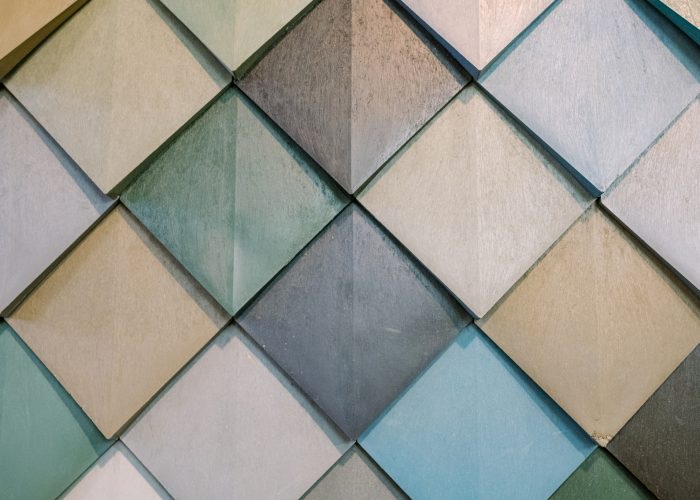
Pretty Plastic
Plastic itself is the waste utilised in the creation of PrettyPlastic tiles by Bureau SLA, Overtreders W & Pretty Plastic. The scale-like tiles, which can be produced in a series of colours and used as exterior cladding are made from end-of-life construction products made from PVC, such as old plastic window frames, downspouts and rain gutters. The tiles represent a significant development for the construction industry, which in itself generates vast amounts of waste each year. These slick and visually appealing surface tiles create a circular economy whereby waste is diverted from landfill and the products themselves can be endlessly recycled – whilst offering a beautiful design solution that can be customised through colour to suit any interior or exterior project.
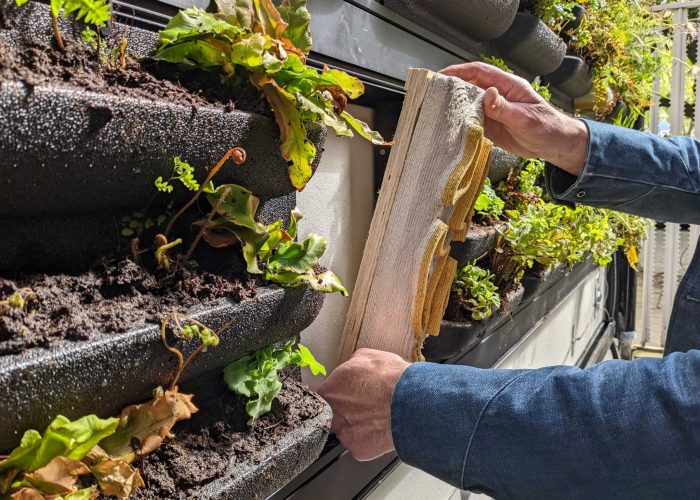
Omlab x MVRDV
Exterior modular cladding is also the focal point of a collaborative project between Omlab and MVRDV, although in this case, the team takes a slightly less orthodox approach when questioning what is required within this unique design context. The assumption with cladding generally is that it should stand the test of time, lasting as long as possible, but Modular by Nature proposes a different approach. Instead of trying to preserve the cladding from everything nature has to throw at it, they look to go with nature, recognising the significance of life cycles – which include regrowth. The panels they create are made from an ecologically sound material prototype known as Itbettermatter. Derived from fauna-based waste, the substance is 3-D printed into forms inspired by cocoon or nest-like structures found in nature. These modules are then intended to be integrated into Mobilane living wall systems, offering a place of rest and sanctuary for the insects and animals that might invite the plants that surround them. And at the end of their life the modules break down, releasing pre-cast seeds as they do so, and thus new life has a chance to form.
These projects, and the many other examples of plastic alternatives on show during the event, highlight a collective mindset and move toward constructive action that could and indeed should change the ways in which we produce polymers in the future. And the present.




